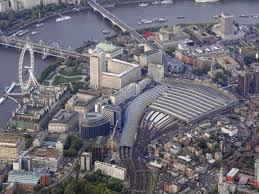Understanding London Waterloo Station: A Central Transport Hub

Introduction
London Waterloo Station, located in the heart of the capital, is one of the busiest and most significant railway stations in the UK. As a key transport hub, it serves millions of passengers every year, providing vital connections to both regional and national destinations. With its rich history, architectural significance, and ongoing developments, Waterloo Station remains not only a critical piece of London’s transport infrastructure but also a geographically and culturally important landmark.
Historical Background
Opened in 1848, Waterloo Station was initially known as ‘Waterloo Bridge Station.’ It was constructed to accommodate the growing railway network of the time and has since seen numerous expansions and renovations. The station was fully rebuilt in the 20th century, revealing the iconic blend of Edwardian and modern architectural styles that define it today. It has been a central part of London’s landscape, witnessing significant events, including the Second World War, when it served as a main departure point for troops.
Current Role and Facilities
Today, London Waterloo Station continues to play an essential role in London’s transport system. With over 100 million passengers using the station annually, it is a bustling hub for both commuters and tourists alike. The station connects the South West of England, including destinations like Exeter and Weymouth, and provides direct services to several major London Underground lines, enhancing accessibility across the city. The breathtaking concourse features shopping, dining options, and various amenities for travellers.
Future Developments
In recent years, significant investments have been made into the station’s facilities, enhancing the overall passenger experience. Plans for modernization and expansion are set to continue, with improvements aimed at better managing the flow of passengers during peak hours. These enhancements include upgraded ticketing systems, improved accessibility features, and the integration of technology to streamline operations. Furthermore, the wider railway network is also undergoing upgrades to accommodate more sustainable travel options.
Conclusion
London Waterloo Station stands as a testament to the evolution of transport in the UK. Its importance as a central hub speaks to its capacity not just for travel but also for economic and social interactions within London and beyond. Looking ahead, continuous developments at the station promise to maintain its status as a vital contributor to London’s transport infrastructure while improving the travel experience for millions of commuters and visitors. Understanding the role of Waterloo Station is crucial for anyone navigating London’s complex transport system, and its significance will only grow as the city continues to develop.
You may also like

Leeds Train Station: A Key Transport Hub in the UK

The Importance of ScotRail in Scotland’s Transport Network
